Dec 2023 –
As we are all aware, this autumn has been especially wet. Although we are not a big farm and most probably, we have a drill capable of sowing twice our area, I would like to report that the principles of direct drilling and regenerative farming do work. We are all sown up (one of the only farmers in the area), and our wheat crops look very respectable. We did trial broadcasting a small seed cover crop blend pre harvest into the standing wheat crop, I thought that this strategy was worth a try because it was looking like it could turn out to be a late wet harvest. The results of the broadcasting have produced variable establishment, and I am not sure about trialling the strategy again because of the seed and contactor costs.
In my previous article I indicated that we were making a plant to create and store foliar nitrogen in thirty tonnes batches, with the ability to add in other products, such as molasses, fish hydrolysate and any nutrients which may have been shown to be deficient following Sap analysis results. Unfortunately, the project got behind schedule and will now have to be implemented next year. One thing that I did forget to mention regarding this project, was that I have been working closely with the local Catchment Sensitive officer, Julie Jackson from Anglian Water, it is through Julie that I have been able to gain a much-appreciated grant for this project from Anglian Water.
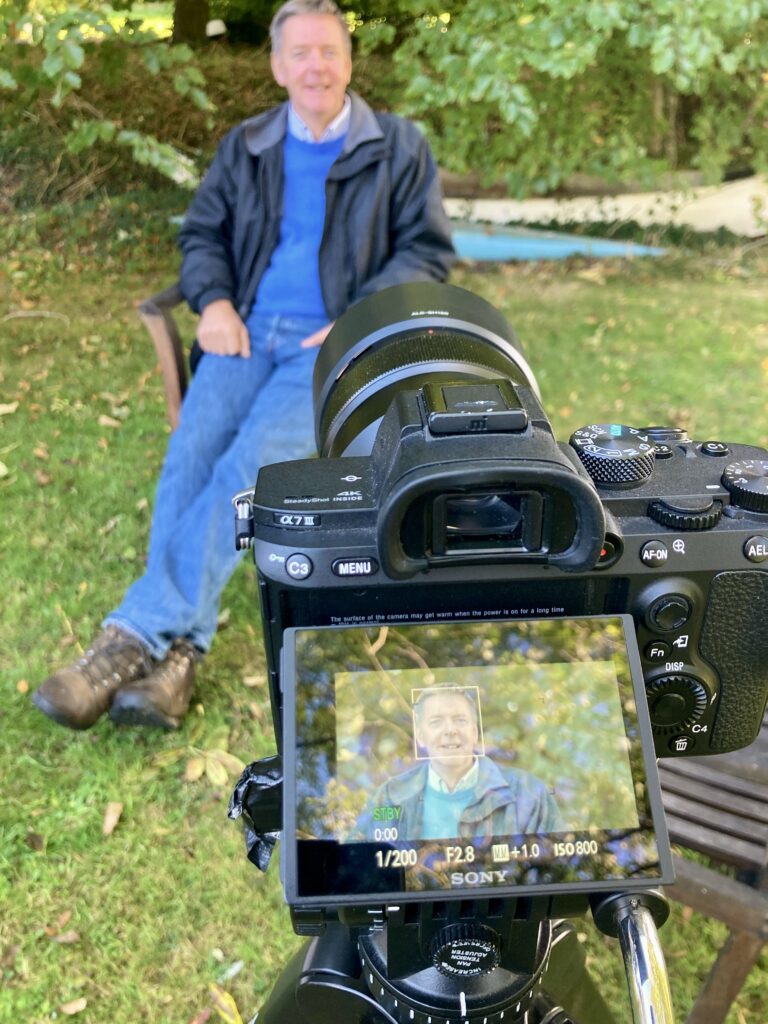
The weather throughout the growing period had its ups and downs, our crops looked very even and well. We had selected and sown a ten-way blend of soft wheats, hoping to gain a soft wheat premium. Interestingly at harvest, one farm met the soft wheat premium and the other ended up with feed quality. If I fail to gain the required soft wheat quality in future years, I may well add some carefully selected hard wheats to the blend to increase the diversity. I had hoped to reduce my reliance on fungicides by using the blend of seed, in conjunction with a reduction in total nitrogen and complimented by using the homemade foliar nitrogen, the latter did not happen, but the wheat blend has been shown to be very robust in a bad Septoria year.
We did a whole field trial with a biological product called Sycon, which was intended to replace our fungicides, the product was applied at T1, T2. The combine yield meter showed no yield difference between the Sycon applied to our cereal blend, and our normal fungicide program. Therefore, we will continue with trialling this product, its rate and timing, next year on a greater scale, hopefully with financial savings to be made along the way. We also trialled the R Leaf product with no variation on the combine yield maps.
Although the wheat crops looked well, a dull July contributed to a reduced bushel weight and the yields were a little disappointing, the last field to be harvest revealed a little surprise. It had a similar cropping history to a field next door; both were first wheats, but the surprise field had a cover crop which had been grazed by sheep about eighteen months prior to harvest and the next-door field had not been grazed. Not a big deal you would think, but the grazed field yielded 1.2 t/Ha more than the non-grazed field, I look forward to seeing if a trend reappears.
Walking over a second-year grass seed crop before harvest led to the observation that there could have been more seed heads per square metre. We had failed to graze the field in the autumn and a quick calculation with our Barenbrug fieldsmen indicated that the potential yield improvement from grazing off the grass seed, in just that one year, could have nearly funded stock fencing around the whole field. This year we have some grass seed into an OSR stubble, containing a carry-over companion crop of crimson clover, (clover seeds do not appear to be a problem as regards grass seed contamination), the yield of grass seed proved to be much greater when following the OSR and companion crop of clovers. I thought that this year I would repeat the exercise and to hopefully replicate our success, as we all know this autumn has been wet and I lost both of my newly sown grass seed crops to slugs.
I was also informed that the Danish farmers sow their grass seed at a lower seed rate and on wider rows. I asked the question as to whether I could shut off every other coulter for the grass seed and sow clover in between the grass seed rows, (I am on 16.5 cm row spacing). The conclusion was that it was worthy of a trial. I also apply this principle to our OSR and this autumn the OSR has also been sown as a blend. The inclusion of clover into crops could help with SFI companion crop eligibility and provide a grazing opportunity post-Christmas. The grazing on its own accord could reduce the weed burden, improve tillering, add nutrition, reduce fungus diseases and maybe contribute towards improving future wheat yields.

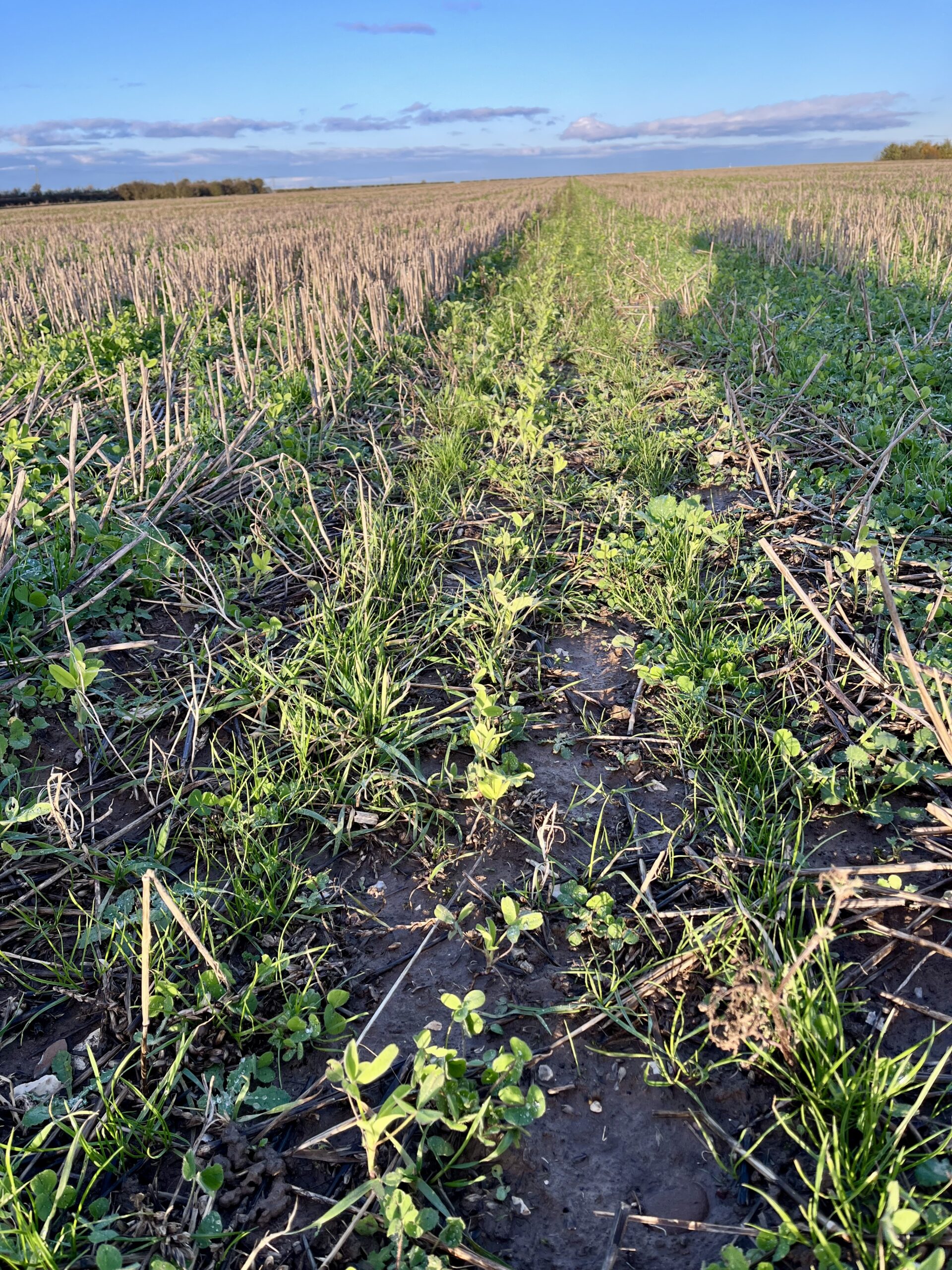
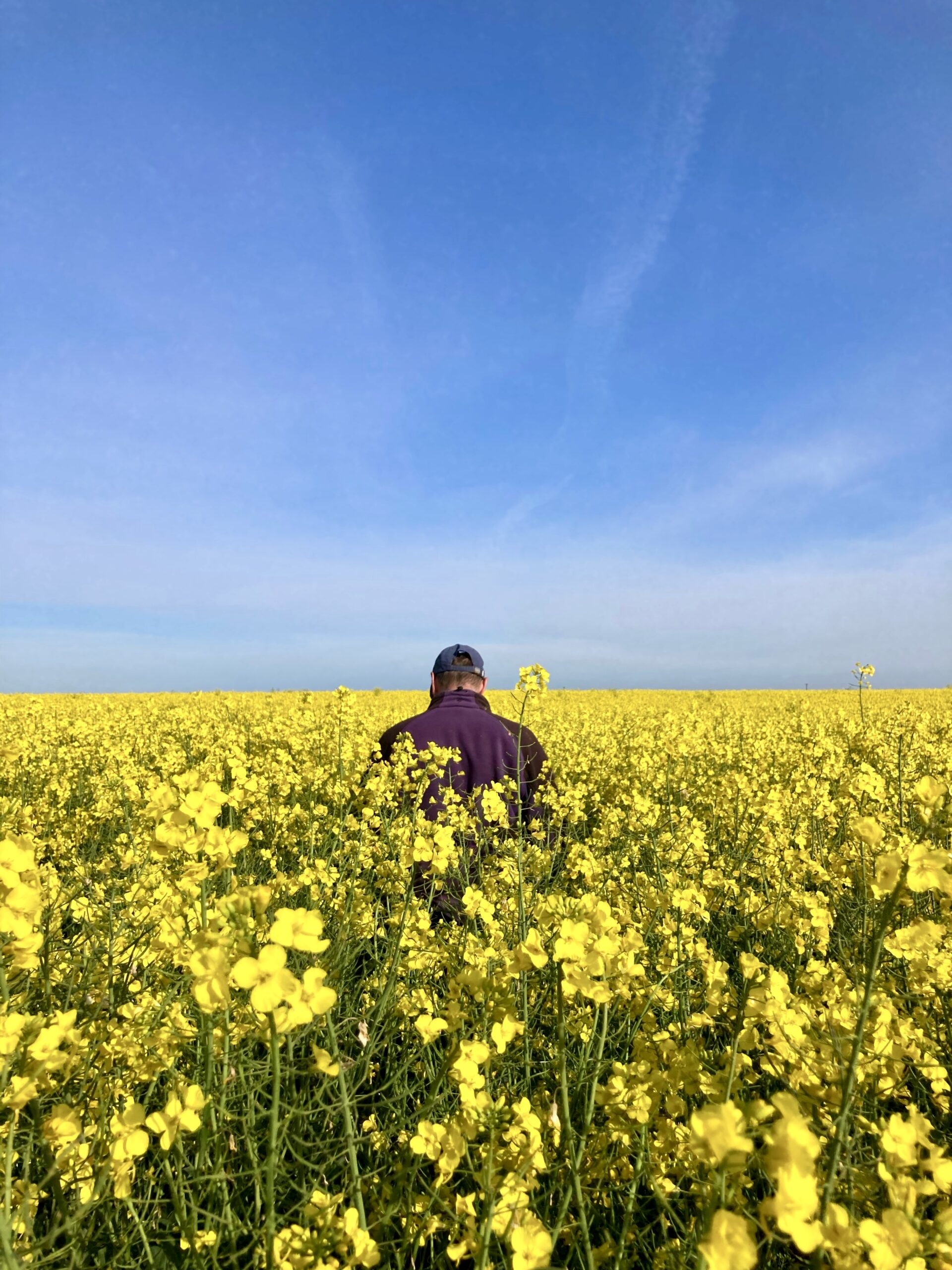
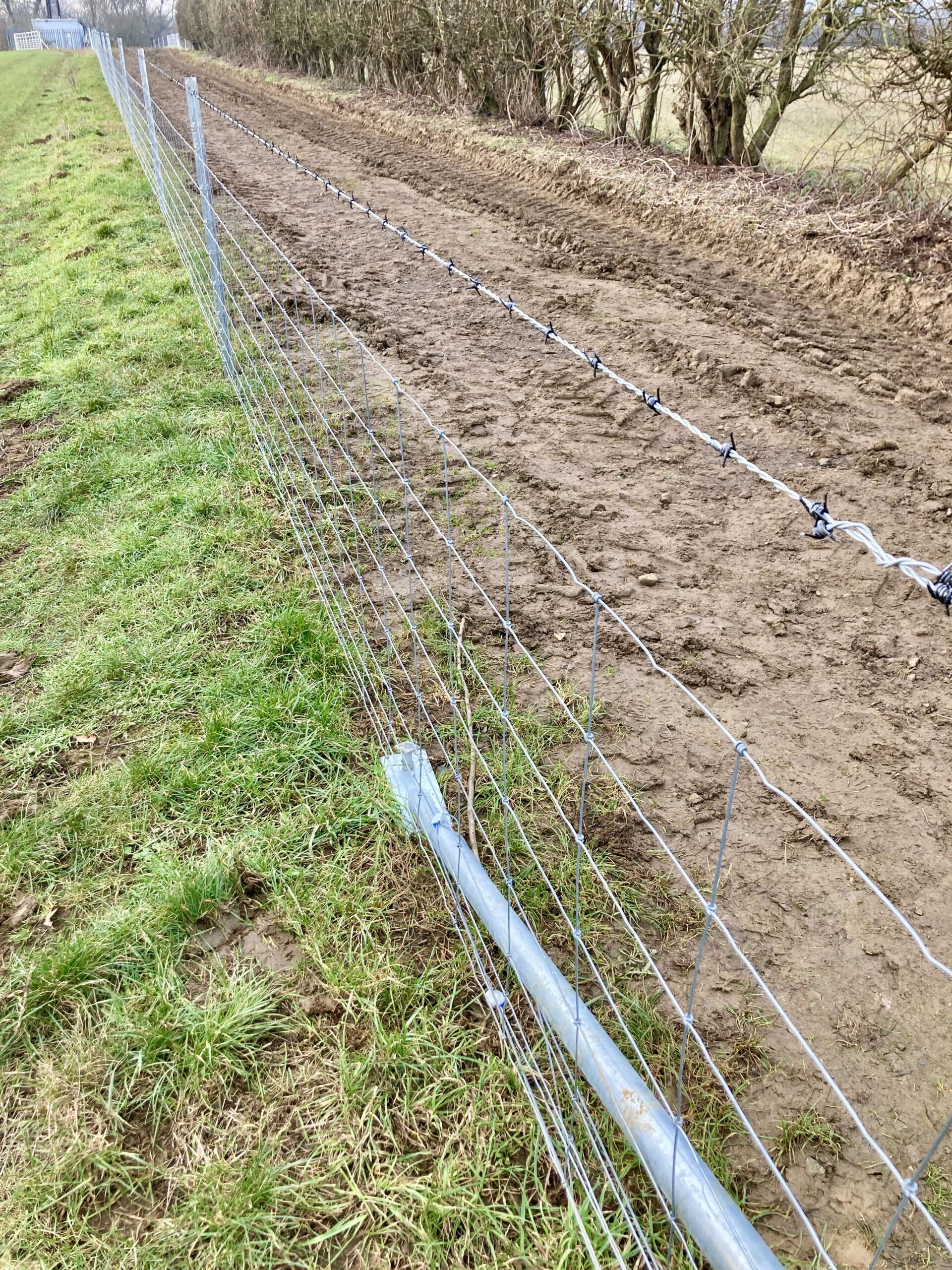
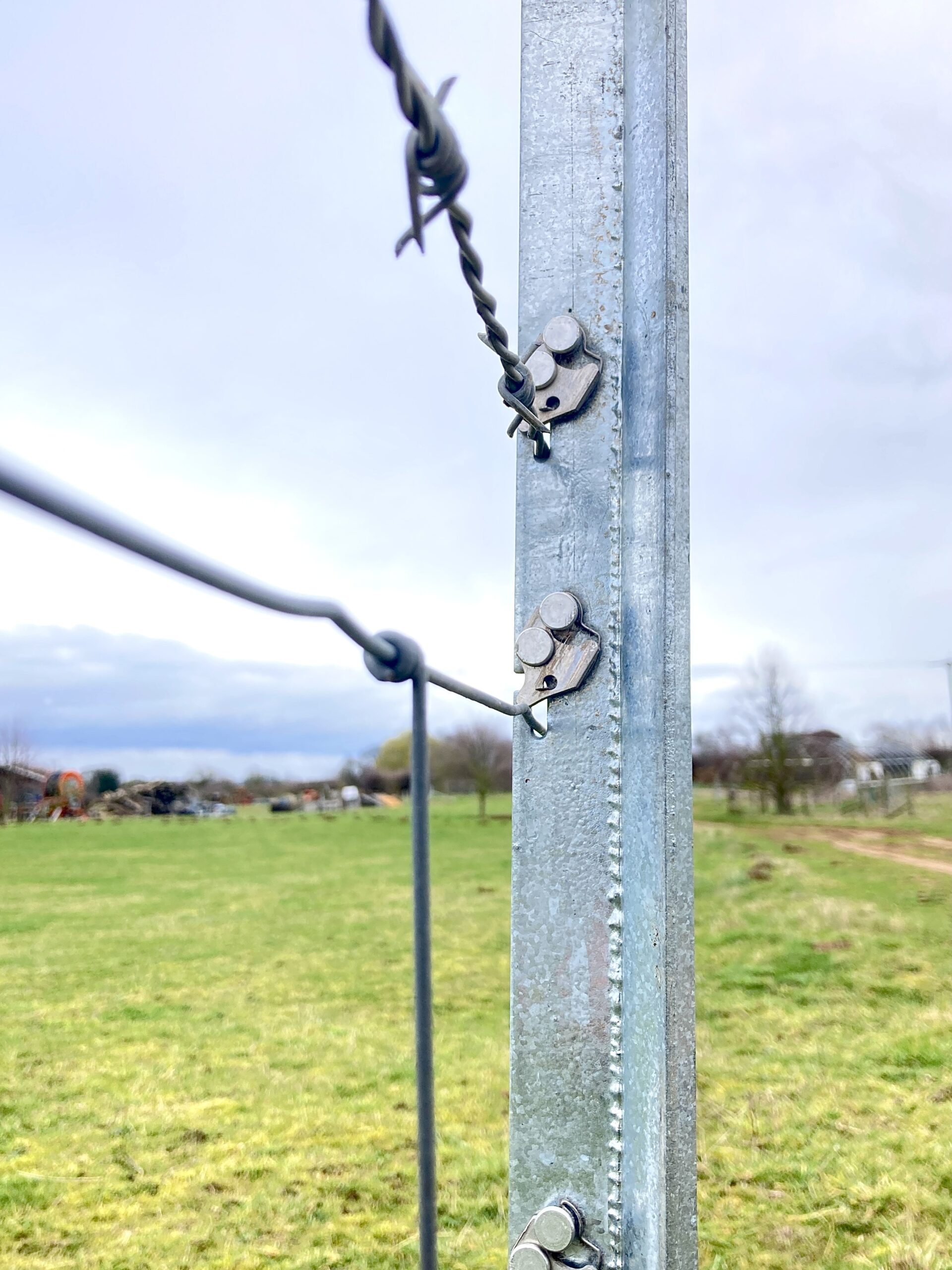

I have followed Andy Cato’s work with interest, his thoughts and operation works on similar principles integrating legumes as companions. I believe that legumes are reluctant to hand over their nitrogen unless either, grazed or mowed. At Groundswell I then saw Trevor Tappin’s inter-row mower, this is designed to mow between the wheat rows, topping both legumes and weeds. I am not sure to which growth stage the mowing will continue to be beneficial, however if this would be continued into April, then the crop could suffer damage from the tractor operating with the interrow mower.
It dawned on me that an inter row mower could well lend itself to being a self-propelled, light weight, satellite guided robot, with a row crop wheel at each corner, which could be left alone to operate in the field all night. The “Holy Grail” as Andy Cato put it when I conveyed my thoughts to him. Just to put this out there, would a type of crimper with less power requirement than a mower perform a similar job?
I have in the past mentioned forming a local regenerative cluster of like-minded farmers, this is still very much on the cards and with each meeting, I find more farmers, who are all at different stages of the “journey” who might be interested in joining such a cluster to benefit from informal knowledge transfer. However, events have overtaken my ambitions, in February I attended a Worshipful Company of Farmers Reunion which was hosted by Rob Shepherd. Amongst other interesting visits, we visited Rob’s farm, where he described the setting up of the Environmental Farmers Group (EFG). This is a concept where farmers group together to form environmental clusters which can provide a platform of scale, for trading environmental services with other industries, be it biodiversity, improving water quality, trading low carbon produce, and potentially trading carbon itself.
There were several presentations about these topics at Groundswell and I learnt that the government will be amending the Environment Act and bringing in new Greening Policies which may stimulate the type of trading that the EFG is being set up to attract. In addition, there will be a new round of government NERF funding to help the formation of regional EFG groups.

Within a couple of months of the Salisbury reunion, farmers in Northern Lincolnshire had been approached by Digby Sowerby from Natural Capital Advisory, who are helping facilitate the Hampshire EFG. Digby’s presentations were good, and we decided that there would be enough local interest to form our own regional cluster. I have now become a member of the steering committee which has the intention of gaining 40,000 Ha’s of expressions of interest, our hope is to form our own EFG cluster in Northern Lincolnshire. The target will be to be in operation early in 2024 and eventually operate with more than 100,000 Ha’s, allowing us to trade at scale with the industries on the Humber Estuary.
Over the previous two years my daughter Anna has been helping with the film “Six Inches of Soil”. The film is now complete and will have it debut in an auditorium in Cambridge on December 5th, there will be more viewing opportunities next year, at our farm, The Pink Pig Farm and John Pawsey’s Shimpling Park Farm.
As a result of participating with my daughter Anna in the forthcoming film “Six inches of Soil”, we ended up completing a second carbon calculator with the Carbon Calculator Toolkit. This produced a result which said that we were sequestering carbon. Consequently, we were encouraged to enter Soil Farmer of the Year, the results of which were announced at Groundswell. We were fortunate enough to come in the final six, something that I am proud of, we may never have entered this competition, if it had not been for the sequence of events mentioned above.
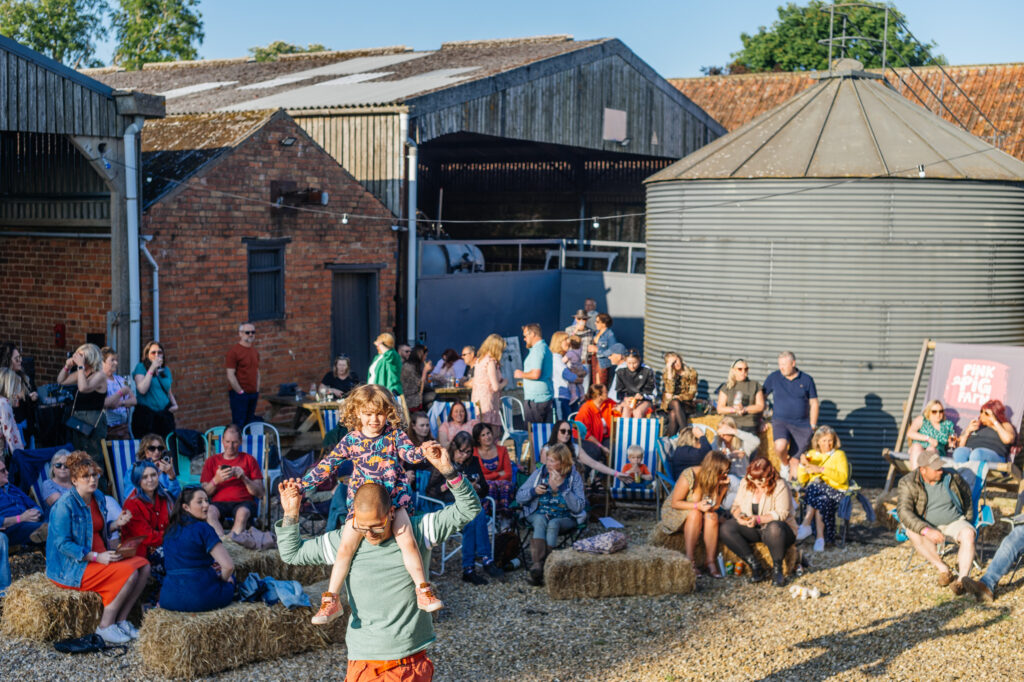
This year we came through the hottest June across the world, breaking all records and throughout the year, individual country temperature records across the globe are being smashed every week. This has been followed by an extremely wet autumn which has created many problems for the farming industry. Books that I have read inform me that one third of the carbon dioxide in the atmosphere has come from Agriculture and much of that has derived from soil organic matter levels plummeting, causing carbon to leave the soil and enter the atmosphere. Obviously, this has been going on for centuries, however the introduction of mechanisation, together with manmade nitrogen, has caused an acceleration of the global warming in the twentieth century and up to the present day.
I apologise for being an eco-warrior but one of the big drivers for me going down the regen route was the fact that I could help in a small way to change and improve the global warming situation, just like the EFG principle one farmer cannot do this alone. I believe that as a committed regenerative farmer, it is my job to prove that this type of farming can make a profit, deliver environmental benefits and above all, set an example to the farming community that the regenerative system of farming works in a sustainable way and if carried out at scale, we can all do our bit to help combat global warming. We could then proudly announce to our grandchildren that we did something to alleviate the mess that the world is accelerating into. The government may have grasped this concept, and the new SFI encourages farmers to work towards the regenerative principles.
To finish on a happier note, in May I hosted my first music and beer festival, my motivation came from fellow regen farmer Jonathan Hodgson who together with his brother Matthew have hosted several festivals. I managed to get together five bands, five real ales, two ciders and a lager. Being a bitter drinker, I underestimated the number of lager drinkers attending our festival and by seven pm I was driving to my local pub to buy another barrel of lager. The cider also ran out by 8 pm. The whole event has been a big learning curve, but we did financially break even, and I intend to host another festival next year. The only complaint was from a person who was reluctant to wait another year for the next festival. It’s not every day that you phone a close friend from a blocked lady’s toilets and ask him to join you in the middle cubicle, complete with a plunger. We discovered that the cistern was not filling, eventually, we locked the door from the inside, and I clambered over the partition into the neighbouring cubicle, I would like to add that no ladies were interrupted due to my actions.




